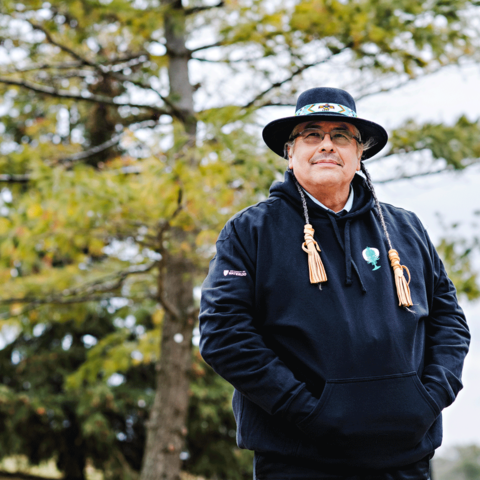
Truth and Reconciliation: A call for action
Working to implement Indigenization on campus

Working to implement Indigenization on campus
By Jon Parsons University Relations
Myeengun Henry
Indigenous Knowledge Keeper, Faculty of Health
“What we’re seeing at Waterloo right now is unprecedented,” Henry says. “It’s a big task to come to terms with the history of what’s happened to Indigenous communities. But we have the right people here, and I’m proud of the direction we are taking.”
Henry points out that while Waterloo is a highly technical university, it has a unique opportunity to set itself on a path that marries technological progress with Indigenous understandings of stewardship for the land. Moreover, while those two may seem to be opposites, he says that the challenges the world faces today call for both approaches.
Henry also sees another twinned approach to change within the University, at both the top and the grassroots.
“How we build a healthy university is to make the change at the top, with governance and administration, and also in the grassroots, with curriculum and content in the classrooms,” he says. “It’s as much about what students are learning as it is about decisions made in the senate.”
While he is optimistic and sees much to celebrate in Waterloo’s approach to reconciliation, Henry also recognizes there are significant hurdles to overcome.
“The trust has to be earned. Whether that’s governments or other institutions, Indigenous people have good reason to be cynical. But what gives me hope is seeing the steps that Waterloo is taking. Next, we need to put the plans and the intentions into concrete action.”

Read more
The Young Eye Foundation is supporting youth in Uganda to grow and fulfill their purpose

Read more
Building a diverse and sustainable future so humanity and the planet can thrive

Read more
Talking about complex societal issues requires trusted experts to combat disinformation
The University of Waterloo acknowledges that much of our work takes place on the traditional territory of the Neutral, Anishinaabeg, and Haudenosaunee peoples. Our main campus is situated on the Haldimand Tract, the land granted to the Six Nations that includes six miles on each side of the Grand River. Our active work toward reconciliation takes place across our campuses through research, learning, teaching, and community building, and is co-ordinated within the Office of Indigenous Relations.